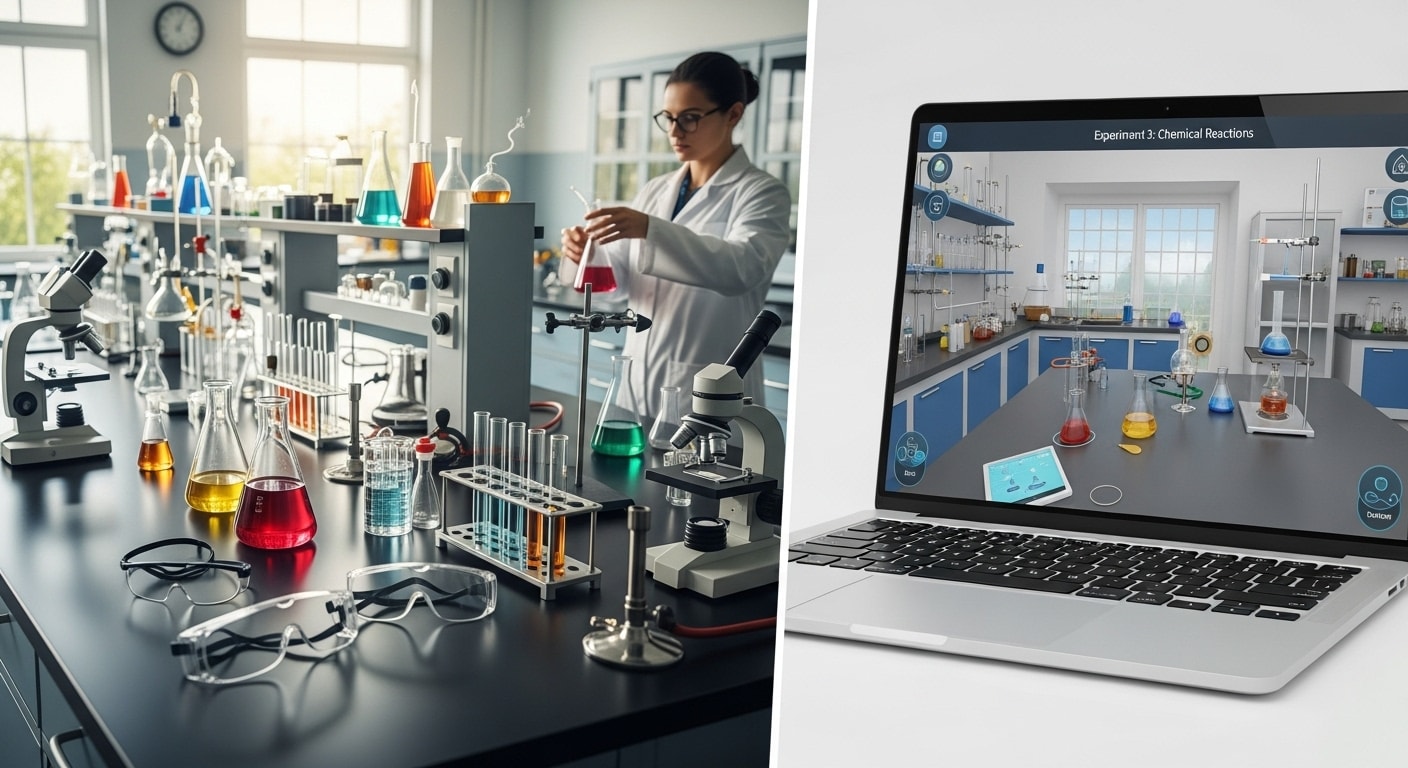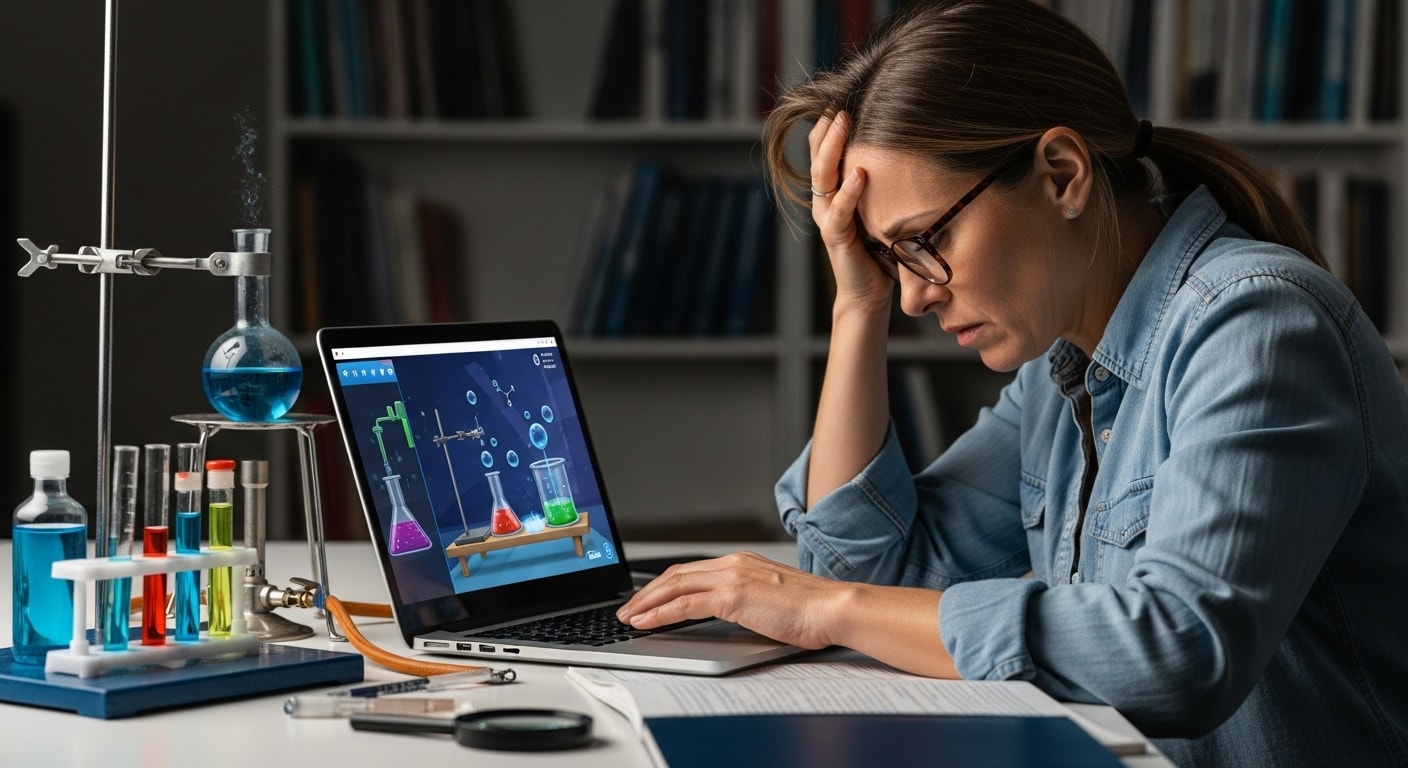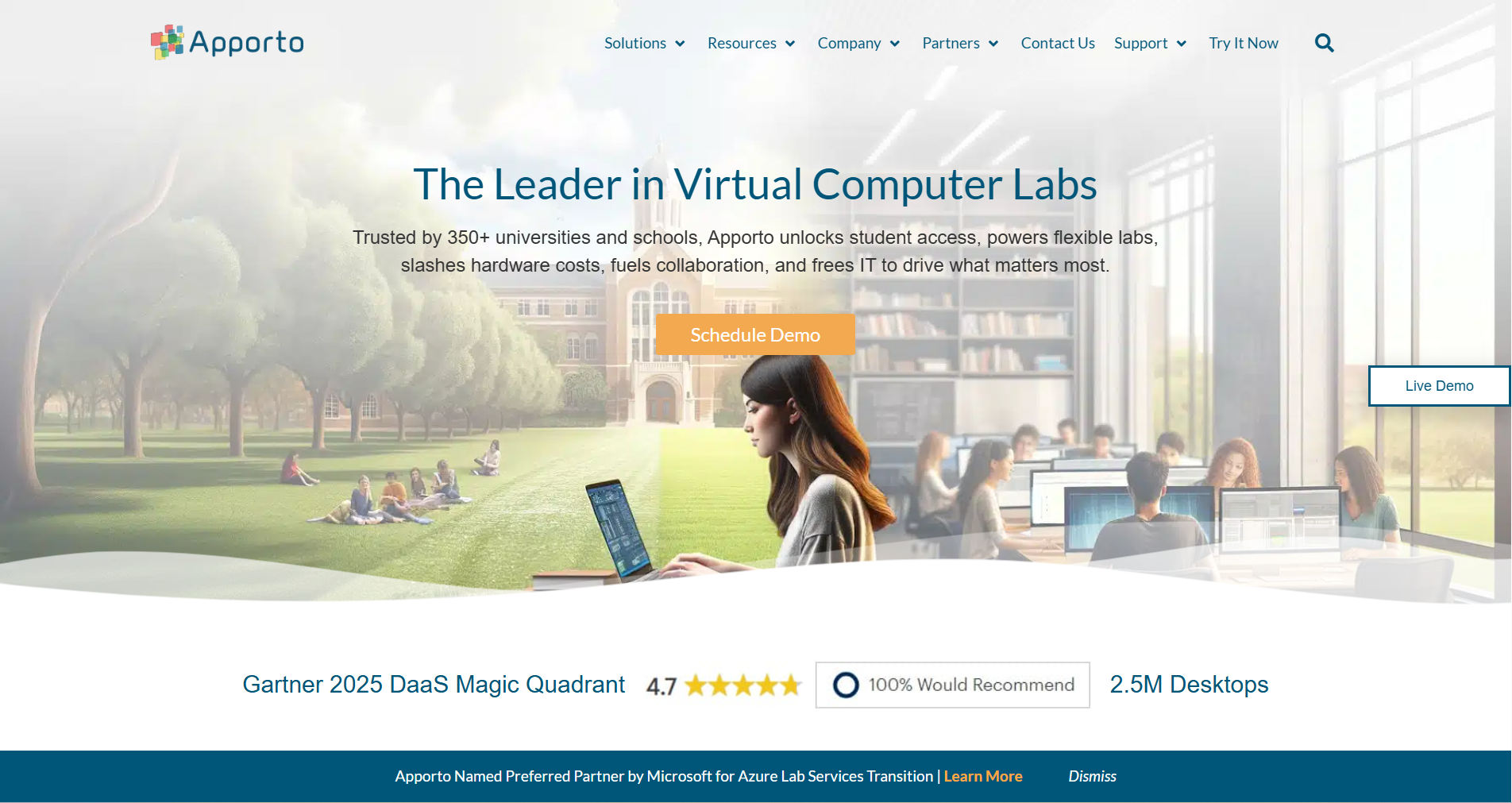The science lab is evolving. What once required rows of beakers, Bunsen burners, and a fixed location now exists in a fully digital space — known as the virtual lab.
These are cloud-based environments that let students perform experiments, explore simulations, and engage in practical learning, all through a screen.
Thanks to advancements in educational technology (ed-tech), virtual labs are no longer a backup plan — they’re becoming the primary mode of instruction in STEM courses worldwide. Instead of being limited by physical infrastructure or expensive equipment, students can access realistic simulations anytime, from anywhere.
This shift isn’t just about convenience. It’s a response to the need for scalable, cost-effective, and inclusive science education. Virtual labs are making it possible to deliver hands-on learning without the traditional barriers — opening new doors for institutions, educators, and students alike.
In the sections ahead, we’ll explore how ed-tech powers virtual labs, how they compare to physical classrooms, and why they’re reshaping the future of science education.
What Is Ed-Tech for Virtual Labs and How Does It Work?
Ed-tech, or educational technology, plays a central role in bringing virtual labs to life. It combines cloud computing, digital simulations, and interactive platforms to create an environment where students can perform experiments online — without ever stepping into a physical lab.
Instead of relying on hardware, virtual labs use software-based simulations that mimic real-world scientific processes. These range from mixing chemicals in a controlled digital space to manipulating variables in physics simulations. The technology is designed to replicate the outcomes of real-world experiments while offering greater control, repeatability, and accessibility.
Because these labs are hosted in the cloud, students only need an internet connection and a browser to get started. Whether it’s environmental science, biology, or chemistry, the tools are available anytime, anywhere.
Virtual lab software removes logistical barriers, allowing students to explore, repeat, and learn at their own pace — all while staying deeply engaged with the material.
How Do Virtual Labs Compare to Traditional Physical Labs?

Virtual labs and traditional labs share the same educational purpose — to give students a way to explore scientific concepts through experimentation. But the delivery and accessibility are where the differences begin.
| Feature | Physical Labs | Virtual Labs |
|---|---|---|
| Cost | High (equipment, maintenance) | Low (subscription-based or included) |
| Setup Time | Requires physical infrastructure | Instant access via browser |
| Access | On-site only | 24/7, from any location |
| Scalability | Limited by space & equipment | Easily scalable across courses |
| Subjects Supported | Science labs (chem, bio, physics) | All major STEM fields + simulations |
Physical labs offer tactile, sensory feedback, which some students may prefer. But virtual labs can go further — simulating dangerous chemical reactions, high-voltage circuits, or rare real-world scenarios that might not be safe or feasible in a classroom.
In fields like environmental science and physics, digital labs are helping educators scale STEM education while maintaining quality and rigor.
Why Are Virtual Labs Crucial for STEM Education Today?
STEM education is evolving — and virtual labs are helping it keep pace. With more students enrolling in science, technology, engineering, and math (STEM) courses, there’s a growing need for tools that can scale without sacrificing quality.
Virtual lab technology answers this need by offering students immersive learning experiences through simulations that bring abstract concepts to life. Instead of reading about Newton’s laws or chemical bonding, students can manipulate elements, change variables, and observe outcomes in real time.
This form of learning is especially effective in physics and chemistry, where visualizing interactions is critical. Tools like physics simulations allow for experimentation without risk, making complex ideas easier to grasp.
More importantly, virtual labs promote active participation, real-world problem solving, and learning at one’s own pace — all essential elements of effective STEM instruction. When students engage more deeply, they understand more and retain knowledge longer.
What Are the Core Benefits of Virtual Lab Technology in Higher Education?

Higher education has always wrestled with balancing access, cost, and quality — and virtual labs provide a rare win across all three.
Here’s how they’re making an impact:
- Accessibility for students worldwide: With just a laptop and internet connection, students from rural campuses to urban centers can participate equally. There’s no need for a physical lab to learn real-world science.
- Own pace learning: Students can perform experiments multiple times, without pressure. This repetition helps reinforce concepts and supports different learning styles.
- Higher engagement and lower learning curve: Digital tools simplify complex subjects through visual, interactive experiences, increasing participation and reducing frustration.
- Real-world applications: Whether simulating a chemical reaction or solving an environmental crisis scenario, students get exposure to practical, applied science — not just theory.
The result? A more flexible, inclusive, and engaging approach to STEM education that works better for both learners and institutions.
What Tools and Features Make a Great Virtual Lab Experience?
Not all virtual labs are created equal. The best ones combine advanced features with ease of use — and the experience should feel seamless, not clunky.
Look for these core features when evaluating virtual lab technology:
- Realistic simulations: High-fidelity visuals and physics-based modeling help students engage with content as if they were in a real lab.
- Interactive tools and haptic feedback: Some platforms now offer simulated feedback — such as the resistance felt when turning a virtual dial — which improves immersion.
- Cloud integration: Labs that run in the browser eliminate installation hassles and work on any device — Mac, Windows, even Chromebooks.
- Connection awareness: Smart platforms can notify users of technical issues, reconnect sessions automatically, and ensure work isn’t lost due to poor internet.
Many classrooms are adopting tools like Apporto, Labster, and PraxiLabs, which offer scalable, accessible lab environments with features tailored to higher ed needs.
What Challenges Do Educators Face When Shifting to Online Labs?

As promising as virtual labs are, the transition isn’t always frictionless. Educators face several hurdles when moving away from traditional methods.
Here’s what typically comes up:
- Lack of tactile feedback: Some students struggle without the physical touchpoints of a traditional lab. No smell of chemicals, no glassware, no “real-world” mess — just a screen.
- Adjustment to teaching styles: Faculty used to hands-on demonstration must rethink how to guide students in a virtual environment, often reworking curriculum materials.
- Curriculum compatibility: Not all virtual lab platforms align neatly with existing syllabi. Finding simulations that match course objectives can take time and trial.
- Technical equity and support: Some students lack consistent internet or devices. Teachers, meanwhile, need dependable support channels when issues arise — without turning into IT help desks themselves.
Despite these challenges, schools that invest in onboarding, training, and the right tools often find the transition smoother than expected.
Can Virtual Labs Truly Replace Hands-On Learning?
The debate between virtual and physical labs is ongoing — and the answer isn’t entirely one-sided.
Physical labs offer tactile engagement. Measuring, pouring, or adjusting instruments in real-time gives students a sensory connection to science. This hands-on experience is hard to replicate entirely in a digital environment.
However, virtual labs excel in areas where physical labs struggle, especially with:
- Dangerous or expensive experiments (e.g., volatile chemical reactions)
- Limited access to materials
- High student-to-equipment ratios
That’s why many institutions are moving toward blended models — using digital simulations to complement in-person labs. Students gain theoretical and procedural knowledge online, then apply it during limited in-person sessions.
Still, there’s room for improvement. Tactile feedback, hardware integrations, and curriculum mapping are main areas being developed. But as ed-tech continues to evolve, the gap between simulation and sensation continues to narrow.
How Are Institutions Using Ed-Tech to Scale Lab Access Across the World?

Virtual labs aren’t just a convenience — they’re a gateway to global science education. Institutions around the world are using ed-tech to expand access beyond the constraints of location or funding.
For example:
- University of Northern Colorado used cloud-based labs to give students access during full building closures — within 48 hours of implementation.
- Emory University scaled its virtual science lab usage to support a hybrid model across global campuses.
- Southern New Hampshire University (SNHU) reduced support tickets and costs by up to 70% after adopting a browser-based virtual lab platform.
In developing countries, where physical infrastructure is often limited, virtual labs are enabling students to engage with STEM education for the first time. They can explore science at their own pace, from anywhere with a stable internet connection.
As institutions face rising demand and constrained budgets, this scalable approach offers a real, sustainable solution.
What’s Next for Virtual Lab Technology in Education?
The future of virtual labs is moving toward greater immersion, adaptability, and intelligence.
Expect to see more platforms integrating AI-driven simulations that adapt to a student’s performance in real time — offering tailored feedback and progressive challenges. AR and VR technologies will bring even more realism, allowing students to interact with 3D models of molecules or machinery in a virtual environment.
Haptic devices, while still emerging, may one day restore the sense of touch missing from screen-based labs.
Just as important is continued investment in teacher training, curriculum development, and research. The next generation of browser-based virtual labs won’t just replicate physical ones — they’ll exceed them in depth, scale, and accessibility.
Why Apporto Is a Smart Choice for Virtual Labs

If you’re exploring virtual lab platforms, Apporto deserves your attention. It’s a browser-based, cloud-native solution trusted by top universities for delivering high-performance virtual labs across STEM disciplines. With no software to install, support for multiple operating systems, and realistic simulations, Apporto offers an experience that feels remarkably close to a physical lab — without the cost or complexity.
Educators benefit from LMS integration, real-time collaboration, and dedicated support from a team that understands both technology and education. Whether you’re teaching physics, chemistry, or environmental science, Apporto scales with your needs and simplifies lab delivery for students everywhere. Try Apporto now.
Conclusion: How to Start Using Ed-Tech for Virtual Labs Today
Virtual labs are redefining how science is taught — offering greater accessibility, cost savings, and student engagement than ever before. Whether you’re an educator, department head, or IT leader, the tools to modernize your lab experience are already here.
Start by evaluating what your students need most. Explore platforms that align with your curriculum. Run small pilots, gather feedback, and scale as you go.
The world of science education is changing — and virtual labs are leading the charge.
Ready to explore virtual lab technology? Start here.
Frequently Asked Questions (FAQs)
1. Can virtual labs be used for chemistry and physics classes?
Yes. Virtual labs support chemistry and physics through detailed simulations that let students observe reactions, test theories, and manipulate variables — all without physical risk or equipment.
2. Do virtual labs require expensive hardware or software?
No. Most modern virtual labs, like Apporto, are browser-based. That means they run on standard laptops or desktops with an internet connection — no special hardware or licenses needed.
3. How do students perform experiments online?
Students access a cloud-based environment where they interact with digital tools to simulate real-world experiments. These actions mimic lab procedures using clicks, drags, and interactive visuals.
4. What happens if there’s a technical issue during an experiment?
Leading platforms include autosave, session recovery, and real-time notifications. Most also offer fast support and simple reconnection so students can resume without losing progress.


